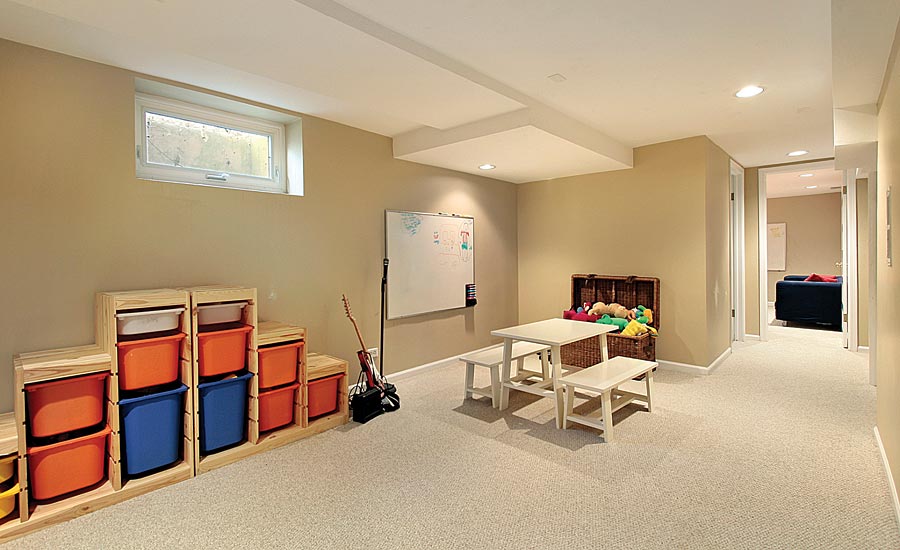Resilience is a newer design concern within the construction industry. With the apparent increase in natural disasters, such as hurricanes and wildfires, the desire for more resilient buildings is on many people’s minds. However, what is resilience and how do gypsum panel products factor into this new way of thinking?
Resilience is a relative term. Nothing is 100 percent resilient. Every material (with the possible exception of a diamond) is susceptible to the effects of some kind of stress, and as a result, is not entirely resilient. A working definition for resilience, currently being considered within ASTM, can be summarized as the ability of a defined system to resist or limit impacts from a stressful event and rapidly return to service.
Resilience has four basic principles: Planning and preparation, adaptation, withstanding/limiting impacts, and recovery. As the working definition underscores, defining the boundaries of a system is essential to evaluating its resilience. A system boundary can be anything from a water bottle to a whole community—it is up to the user to decide. Finally, potential stressful events need to be characterized.
Let us consider a lightweight wall or partition, which is both a system and a component of a larger system, namely, a structure. Our main materials of focus are gypsum panel products and how they are resilient, contribute to system resilience, or both. We will consider stressful events to be likely impacts—a runaway cart, for example, or a fire. By focusing on the four principles and how they interact, we gain understanding into how gypsum panels contribute to resilient design and construction.
Planning and Preparation
As the old saying goes, an ounce of prevention is worth a pound of cure. Indeed, many would argue that the first principle—planning and preparation—is the most important. The design phase of any building project is critical to creating a resilient structure. Yet, the other principles need to be considered during design if resilience is to be achieved. As a result, recovery, adaptation and the ability to withstand or limit impacts are inseparable from planning and preparation. (Figure 1 illustrates this method of approaching resilience.)
At the design level, planning and preparation include assessing the risk of possible disruptive events. Hurricanes, flash floods, and even man-made disasters—such as a terror attack—are a few examples of potential risks. Of course, for any given building in any given location, some hazards weigh heavier than others do and the design team must consider these first. Designing a building for a flood prone area should prompt the specification of systems and products that resist mold and moisture damage to minimize problems and speed recovery should a flood occur. Day-to-day scenarios also demand scrutiny. In order to be considered resilient, high-traffic hallways must be designed to accommodate and withstand the movement of carts, wheel chairs, and pedestrians without the need for weekly, monthly, or even yearly repairs.
As we can see, risk assessments for resilience invariably entail considering how impacts can be mitigated and recovery secured. Materials and systems are selected to minimize damage and enable recovery. It is worth considering how critical a particular system is to the overall recovery of a structure. Is immediate recovery of the system essential or is repair within a few days acceptable? Again, the other three principles are part and parcel of planning and preparation.

Mold and moisture resistant gypsum panels increase the resilience of basement rooms that may be susceptible to mold.
Adaptation
Adaptation is the next principle we will address. Adaptation is the ability to change in response to emerging needs. For example, community centers often host recreational events on a daily basis, but also serve as storm shelters when the need arises. A less obvious but pertinent component to resilience is the ability to alter a building for unanticipated future uses. In this case, lightweight gypsum partitions have an advantage. Removed and built relatively easily compared to other technologies, such partitions contribute to a more adaptive and therefore more resilient structure. Future use and adaptation is a less acknowledged form of resilience, but building a more resilient and sustainable environment demands consideration of adaptation within planning and preparation.
Limiting Impact
The ability to withstand and limit impacts is what most people think about when the concept of resilience is raised. However, a system may be intended—in whole or in part—to protect a structure from an impact. In fact, such a system may even be destroyed in the process of limiting an impact because it is designed to help preserve other systems in doing so. Here is where fire-rated gypsum panel partitions become a critical resilient design choice.
The gypsum panels within the system naturally calcine in a fire scenario, producing steam that preserves the area on the other side of the wall. By doing so, gypsum panels limit the impact of the fire event on the larger system—the building. However, other gypsum panels also have the ability to withstand or limit impacts. Abuse and impact resistant panels, while certainly not a match for the likes of an EF5 tornado, do prevent or minimize damage from less extreme but more common impacts making such panels a resilient choice for a variety of situations.
Recovery
The final principle is recovery. Systems may survive an event unscathed, or may need repairs or rebuilding. The importance of system survival needs to be evaluated upfront in planning and preparation. In the case of a hospital, some systems are more essential than others. Electrical system survival can mean life or death for the people housed therein, while maintaining patient privacy would likely be a lesser concern in the event of a disaster. In some instances, it is acceptable for recovery to be deferred.
Time is an attribute that frames the way recovery is defined in every resilience scenario. Gypsum panel partitions are not resilient enough to withstand an EF5 tornado. Nonetheless, they are easy to repair and if needed, reconstruct entirely. Indeed, construction time is minimal compared to some other technologies. In addition, the materials that comprise the system such as studs, fasteners and the panels are all readily available, even at big box retail stores. Therefore, even if a partition system is destroyed, it can be repaired and the space made usable in days, not weeks, as might be the case with other system types.
As we have seen, gypsum panel products and the systems to which they contribute are viable design options for resilient structures. In both large and small-scale exposure scenarios, panels offering mold and mildew resistance, fire resistance, and abuse resistance and impact resistance contribute to a structure’s ability to withstand or limit the impact of stressful events. Gypsum systems allow buildings to return to service in good time or to be adapted to a new form of service. W&C





Report Abusive Comment